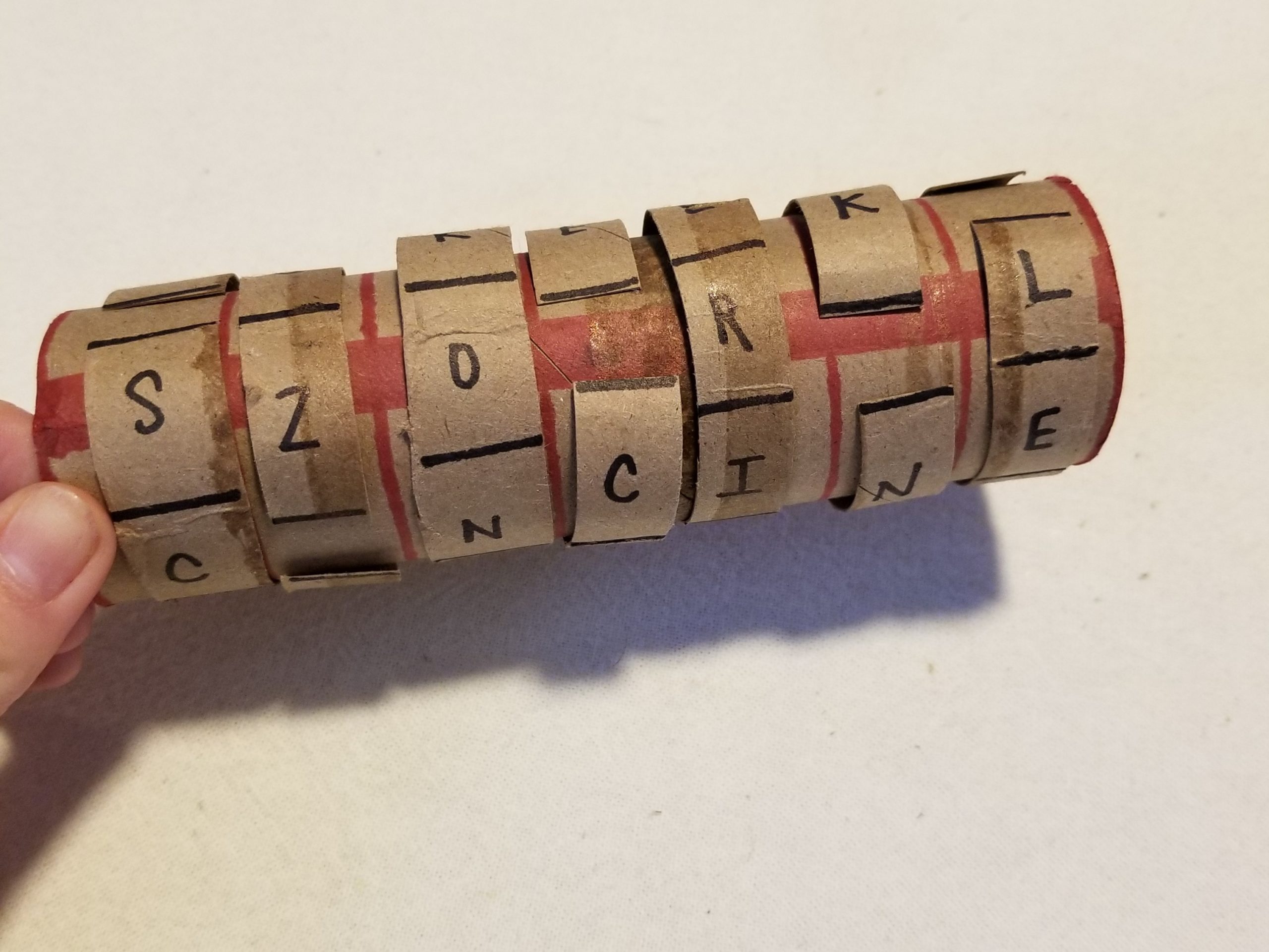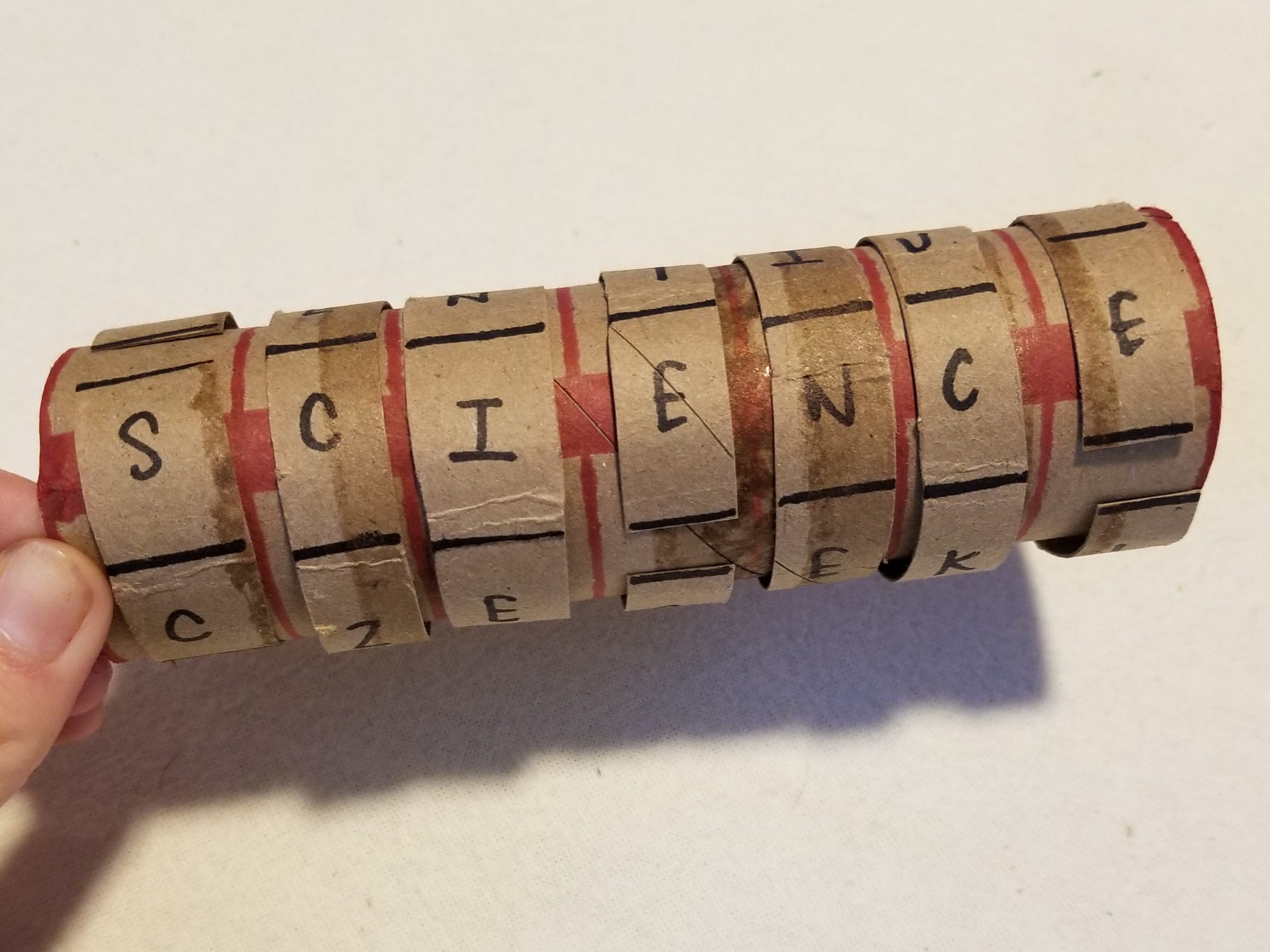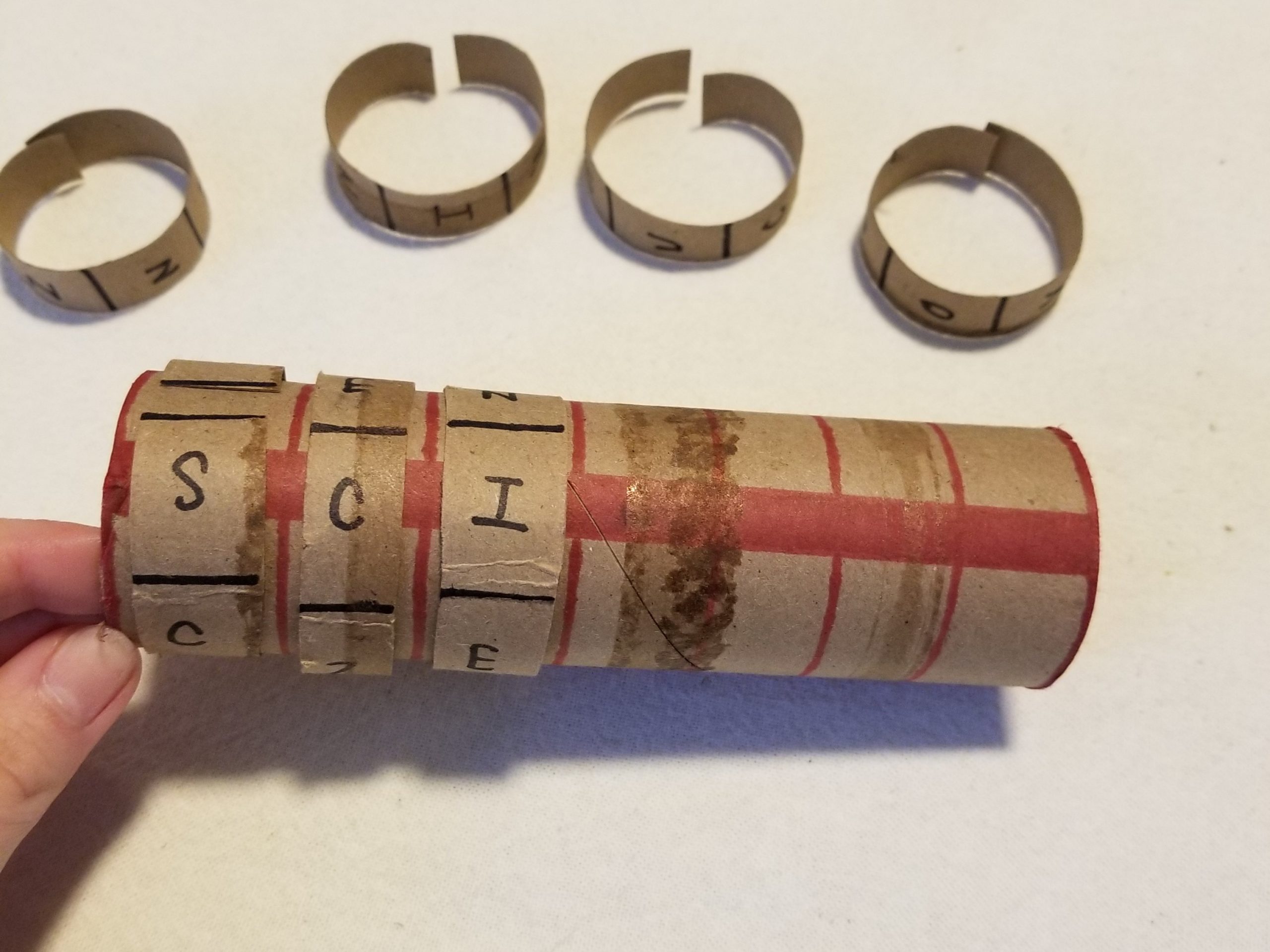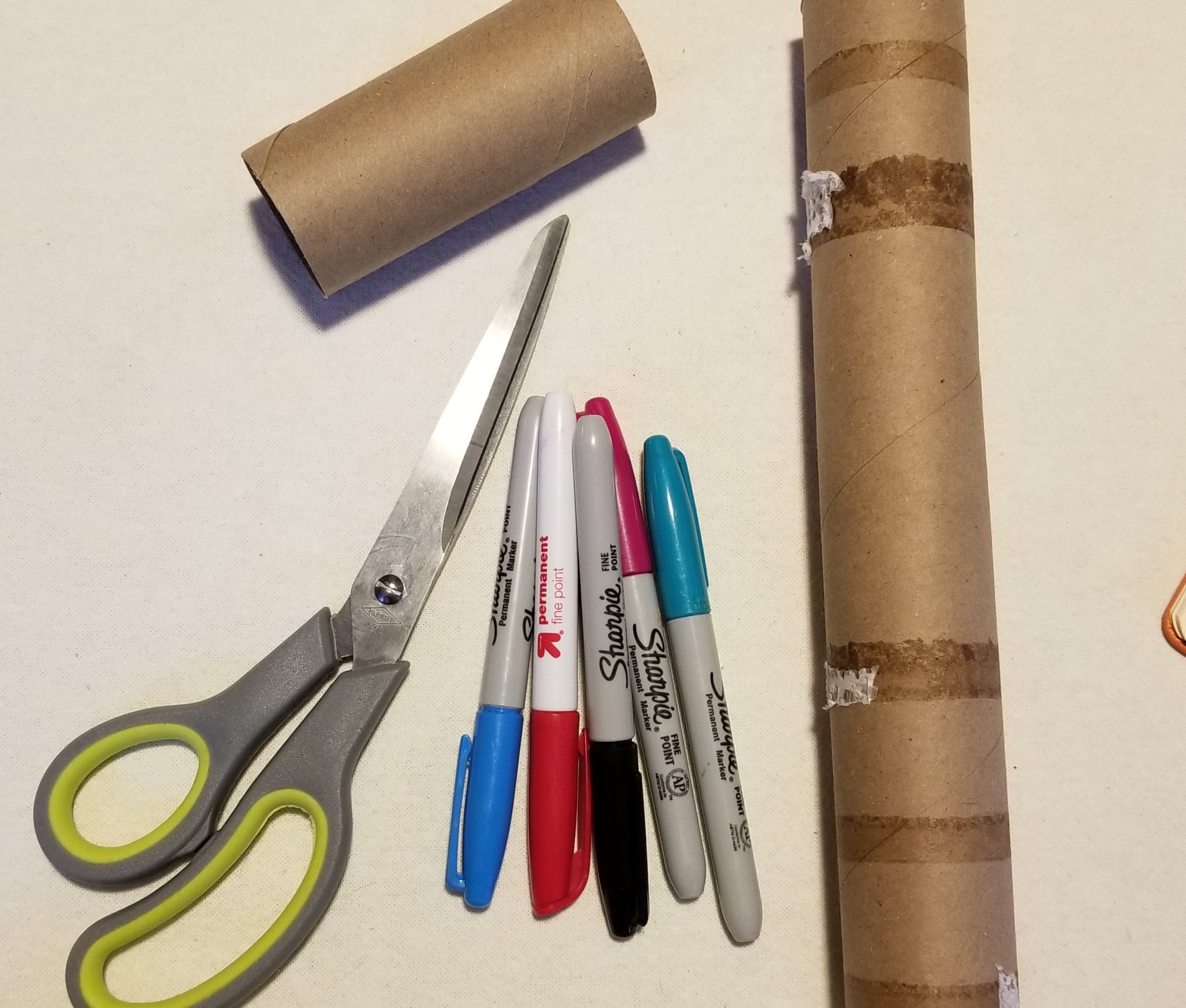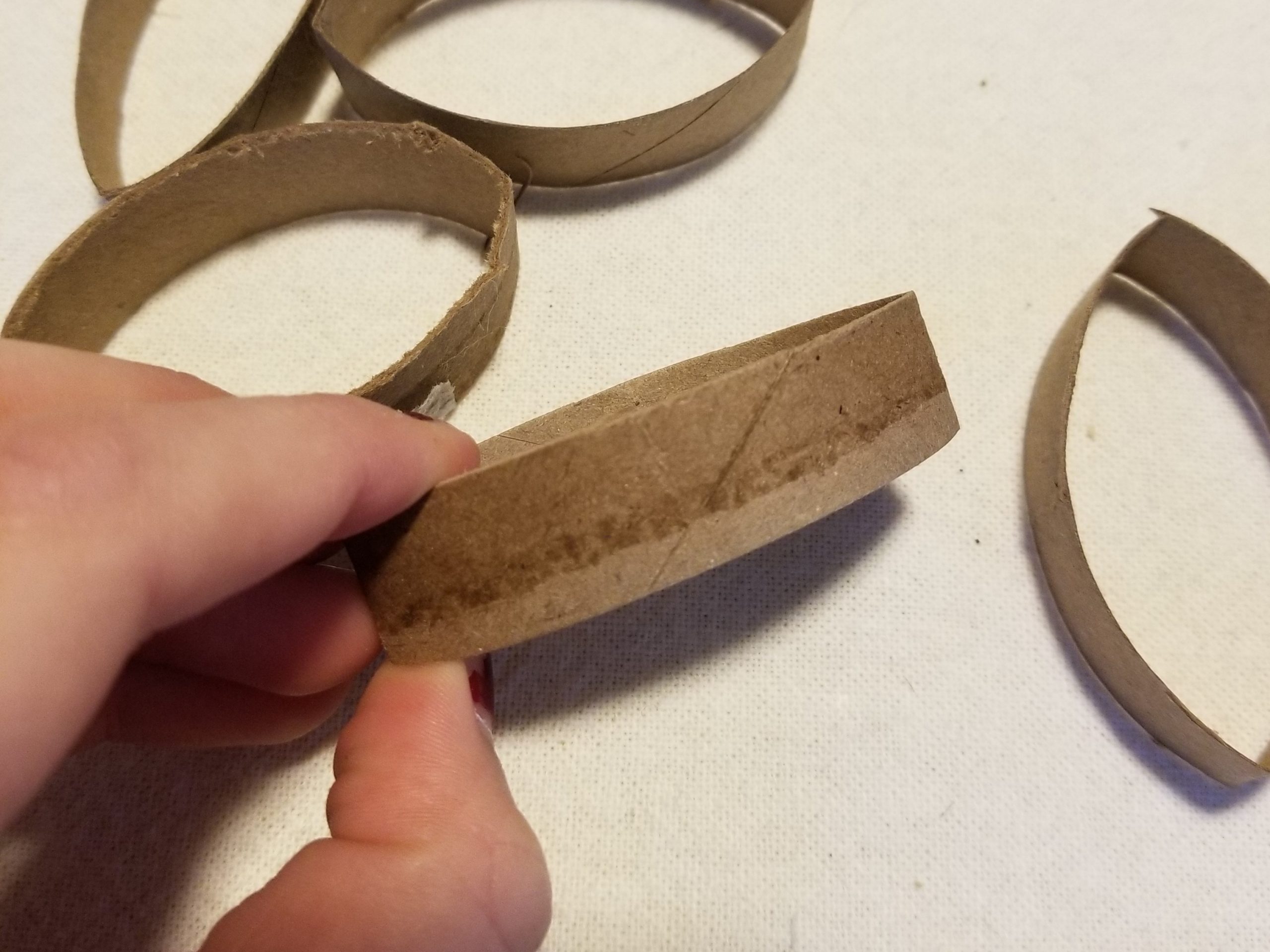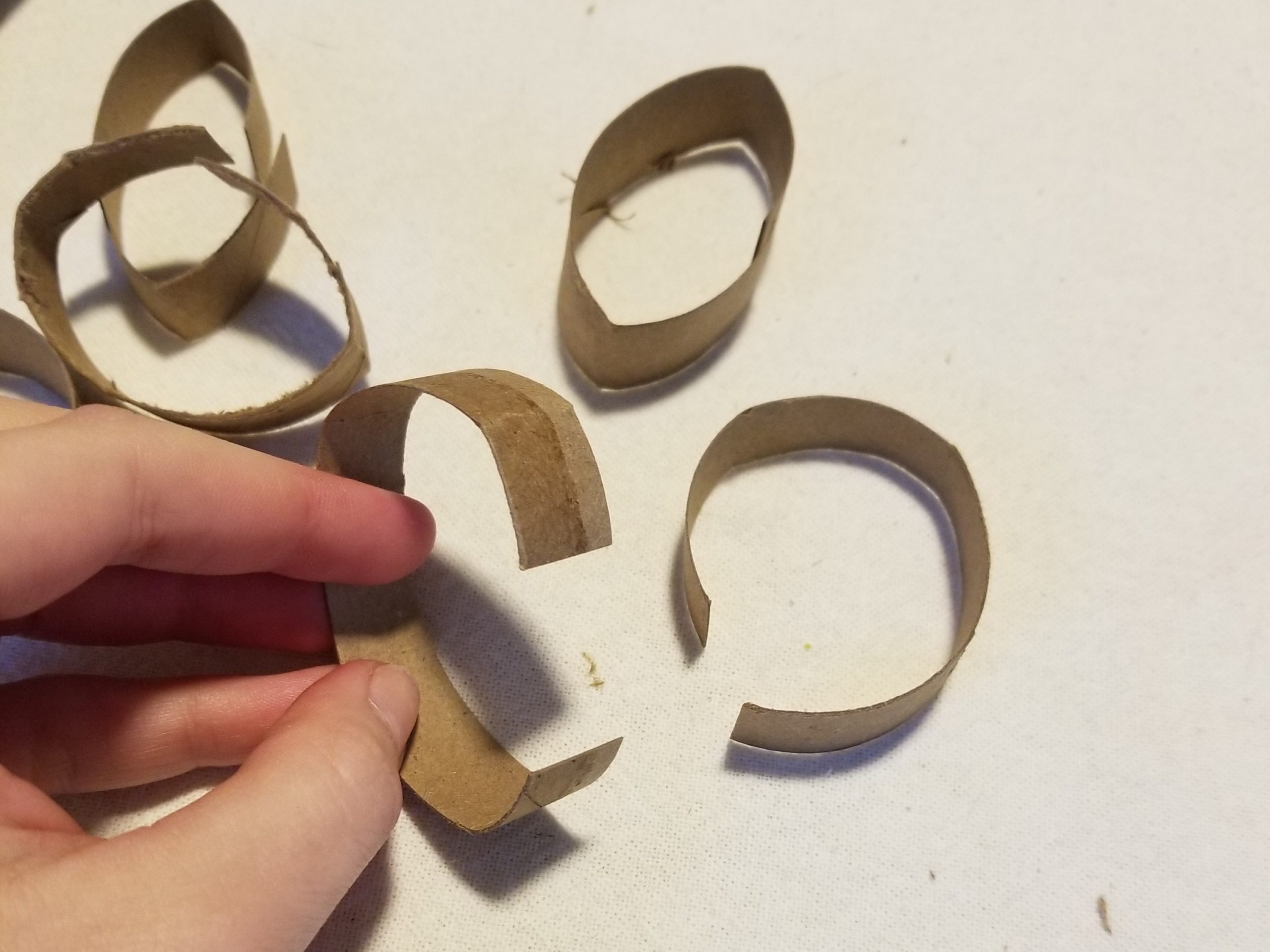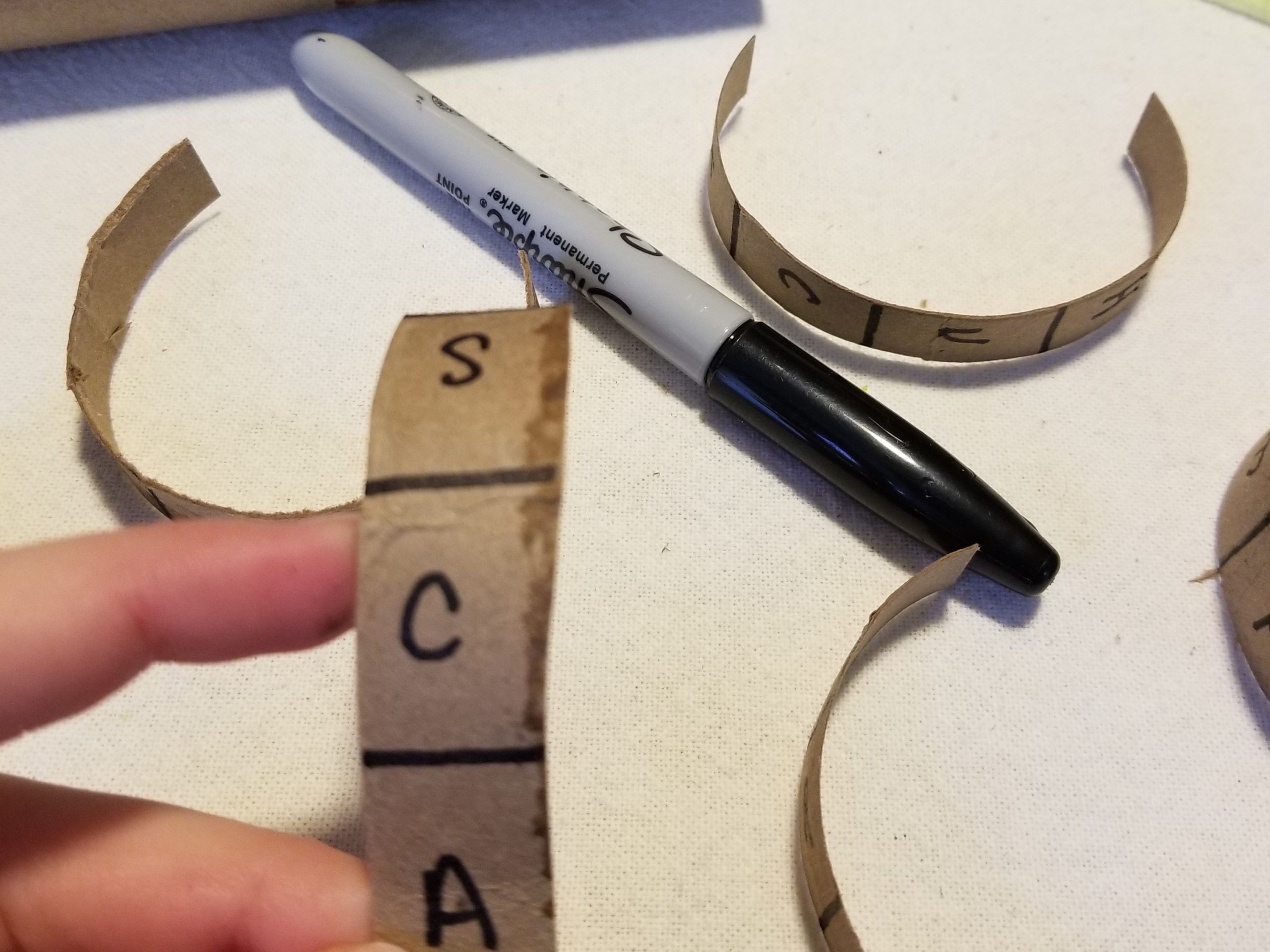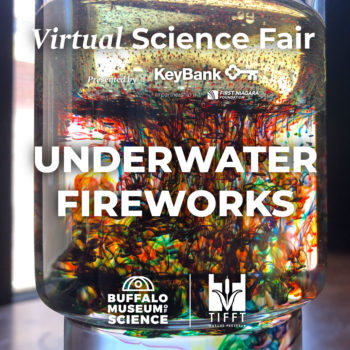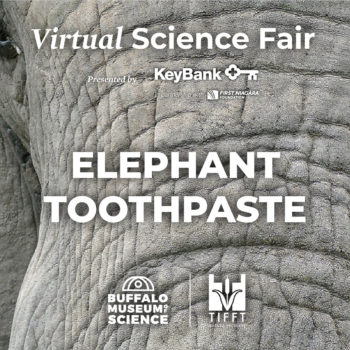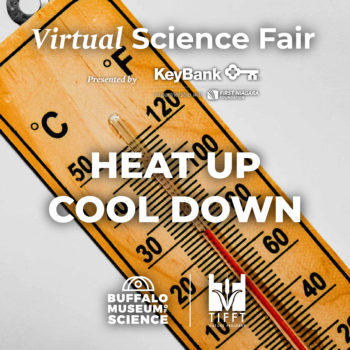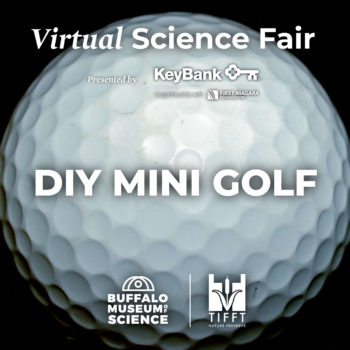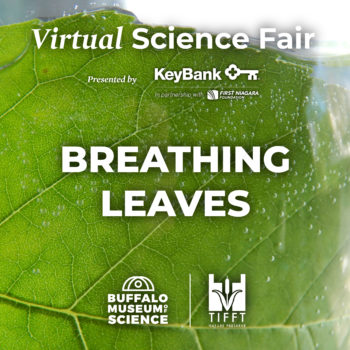Decoder Wheel

Have science fun as a family! Complete activities with parental supervision.
Materials:
- One Paper Towel Tube or Two Toilet Paper Tubes
- Markers
- Scissors
- Ruler
Procedure
- Cut the paper towel tube in half.
- Cut one half of the paper towel tube into 1⁄2” pieces. Make a cut in each of those pieces so they no longer form a connected ring.
- Using the ruler, divide each piece into 4-5 equal sections and write a letter in each section. Make sure to put one letter on each section.
- Fit the sections around the other, uncut tube, making sure the sections onto the full paper towel tube in the correct order.
- Draw dividing lines between the sections to help keep them separate, and draw a horizontal guide line across the length of the full tube. This way, the message will be properly decoded.
- Be sure to take a picture or video to share in the Facebook comments on the Buffalo Museum of Science or Tifft Nature Preserve pages!
What’s it all about?
Developed in 1470 by Italian architect and author Leon Batista Alberti, the decoder wheel is formally known as a cipher. Now you can keep your own messages secret or even solve someone else’s code!
Decoder wheels and ciphers can be used to create a secret code or used as a tool to try and crack one. They can be simple, like this one, or wildly complex, having to rely on various algorithms.
Some ciphers can be used more than once and they always follow the same steps in cracking a code, while others can only be used once. Alan Turing, a British cryptologist, helped crack the Enigma code, leading to the end of World War II!
Try It!
- Does your decoder reveal one word or several words? When one code word is unlocked, do all of the other words reveal themselves or do you have to keep decoding? Give your decoder wheel to someone else and see if they can decode your secret word or words. Did they get it, or did you have to give them a clue?
